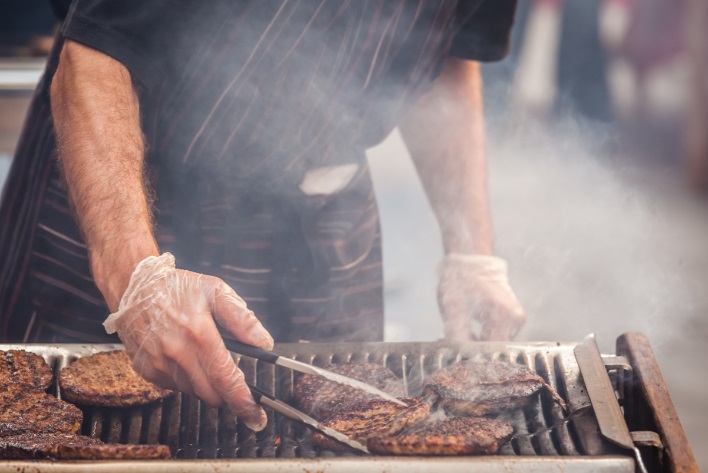With summer coming, it’s only a matter of time before the smells and tastes of barbecued foods dominate the neighborhood. But there’s a downside to grilling that can literally get under your skin. In a study appearing in Environmental Science & Technology, scientists report that skin is a more important pathway for uptake of cancer-causing compounds produced during barbecuing than inhalation. They also found that clothing cannot fully protect individuals from this exposure.
In the U.S., 70 percent of adults own a grill or a smoker, and more than half of them grill at least four times a month, according to the Barbecue Industry Association. But barbecuing produces large amounts of polycyclic aromatic hydrocarbons, or PAHs. These carcinogenic compounds can cause respiratory diseases and DNA mutations. Eating grilled foods is the most common source of PAHs arising from barbecuing. However, according to a previous study by Eddy Y. Zeng and colleagues, bystanders near barbecues were likely exposed to considerable amount of PAHs through skin exposure and inhalation, even if they didn’t eat the grilled foods. Building on that study, the team sought to more precisely quantify skin uptake of PAHs from barbecue fumes and particles.
The researchers divided volunteers into groups at an outdoor barbecue to provide them with varying degrees of exposure to the food and the smoke. After analyzing urine samples from the volunteers, the researchers concluded that, as expected, diet accounted for the largest amount of PAH exposure. However, the skin was the second-highest exposure route, followed by inhalation. They say oils in barbecue fumes likely enhance skin uptake of PAHs. The team also found that while clothes may reduce skin exposure to PAHs over the short term, once clothing is saturated with barbecue smoke, the skin can take in considerable amounts of PAHs from them. They suggest washing clothes soon after leaving a grilling area to reduce exposure.
###
The authors acknowledge funding from the National Natural Science Foundation of China.
The paper’s abstract will be available on May 23 at 8 a.m. Eastern time here: http://pubs.acs.org.doi/abs/10.1021/acs.est.8b01689
The American Chemical Society is a not-for-profit organization chartered by the U.S. Congress. ACS is the world’s largest scientific society and a global leader in providing access to chemistry-related research through its multiple databases, peer-reviewed journals and scientific conferences. ACS does not conduct research, but publishes and publicizes peer-reviewed scientific studies. Its main offices are in Washington, D.C., and Columbus, Ohio.
To automatically receive news releases from the American Chemical Society, contact [email protected].
Follow us: Twitter | Facebook
Media Contact
Katie Cottingham
[email protected]
301-775-8455
@ACSpressroom
http://www.acs.org





